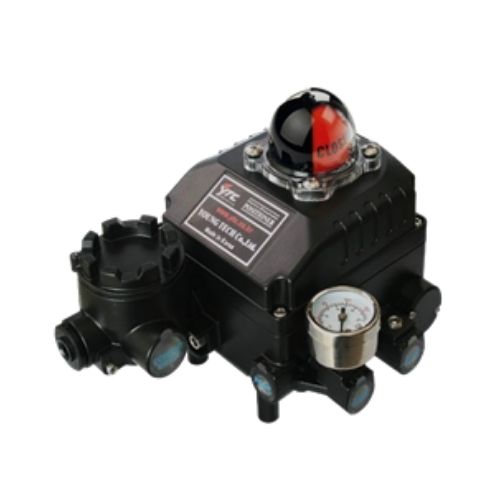A valve Positioner is a device used to increase or decrease the air load pressure driving the actuator until the valve’s stem reaches a “POSITION” balanced to the output SIGNAL from the process variable instrument controller. Valve positioners are used on controlling valves where accurate and rapid control is required without error or hysterises. Positioners are generally mounted on the side-yoke or top casing of the pneumatic actuator for linear sliding stem control valves, and at/near the end-of-shaft for rotary control valves. For either basic design type, “mechanical feedback linkage” connected directly to the valve’s stem provides feedback to controller. The process controller tells the positioner to “change” position; the feedback linkage reports back to the positioner confirming that a change has occurred and gives a “sense” of the magnitude of the change in position.
A valve positioner consists of a very high gain amplifier- this may be pneumatic, electro pneumatic etc, and a feedback link which detects the actual position of the valve. The required movement is for the valve to close. The input pressure from the controller to the bellows falls. The flapper moves away from the nozzle and the pressure after the orifice falls. The pressure to the diaphragm falls and the valve begins to close. The feedback arm moves up rotating the cam clockwise. This raises the beam increasing back pressure in the nozzle until equilibrium is again achieved.
We offer the following types of Valves & Accessories
Smart Positioner
We offer Profibus or Hart or Foundation Field Bus based Smart Positioners mounted on our Control Valves fully compatible with all major Distributed Control Systems (DCS). Smart Valve Positioner, using…
Electro Pneumatic Positioner
Electro - pneumatic positioners are used as final controlling element for operation of pneumatic Rotary/Linear valve actuators in correspondence with an input signal of 4-20 mA DC or split ranges.The…



